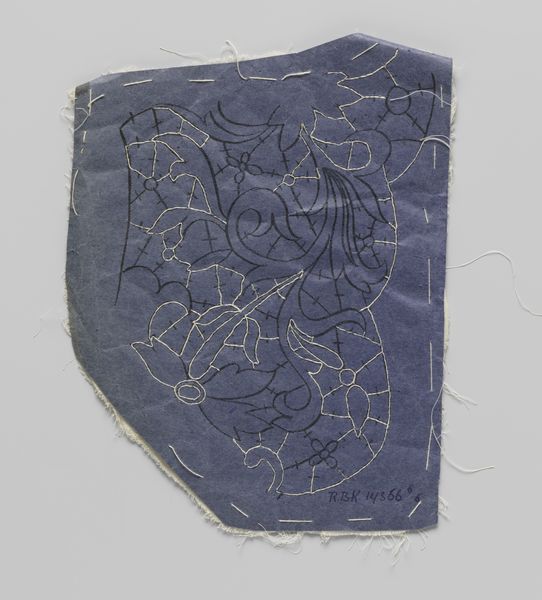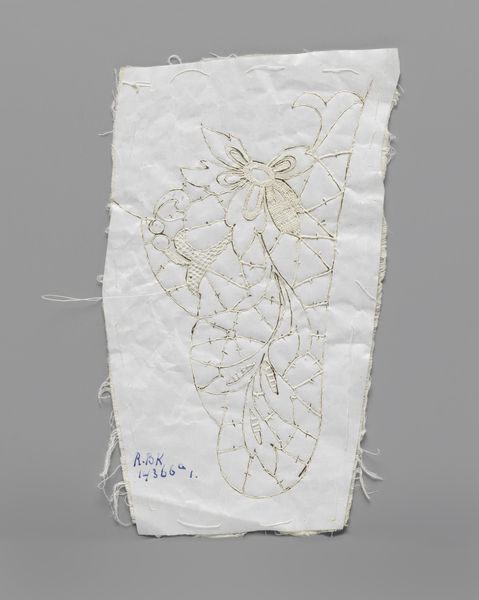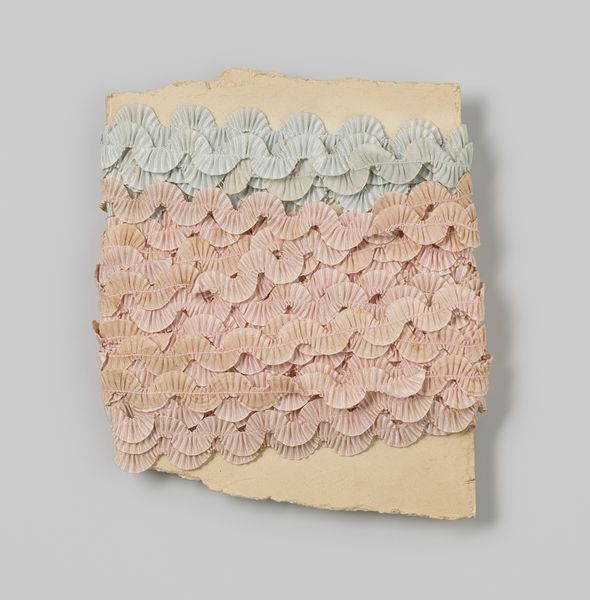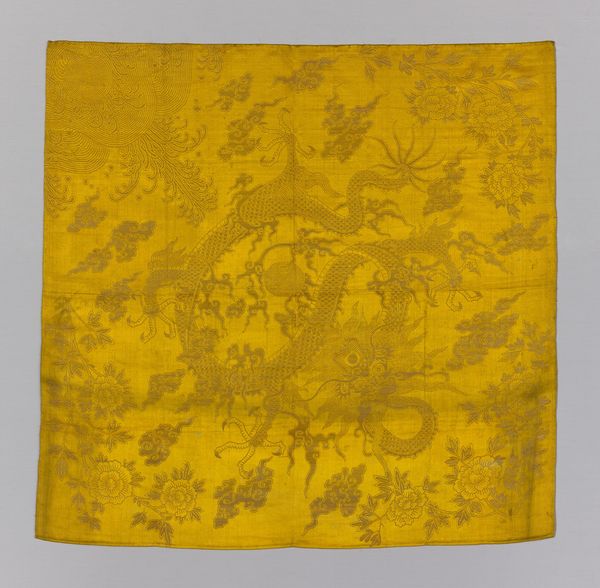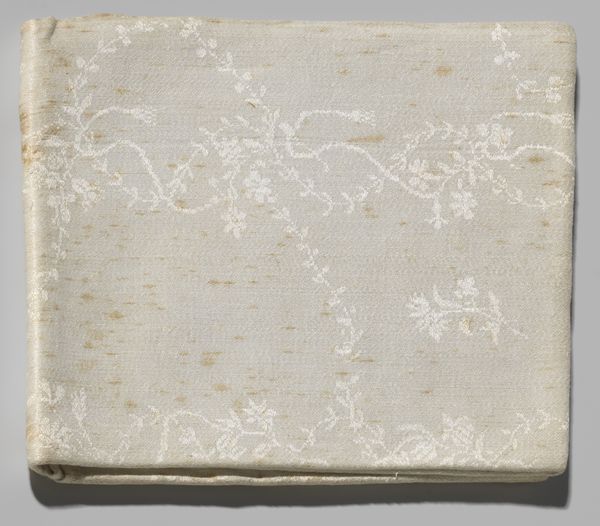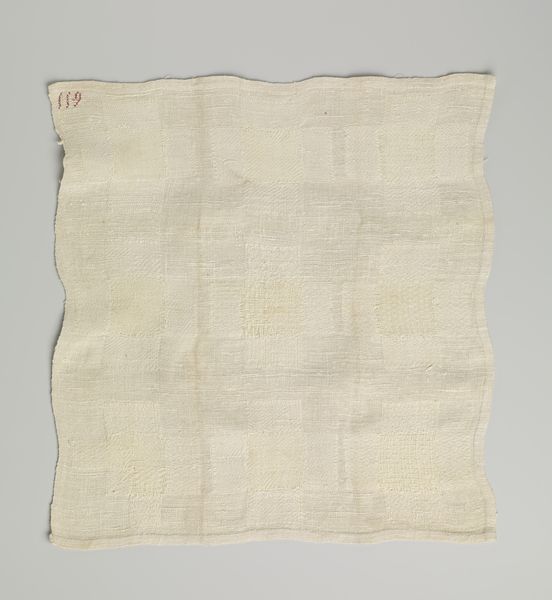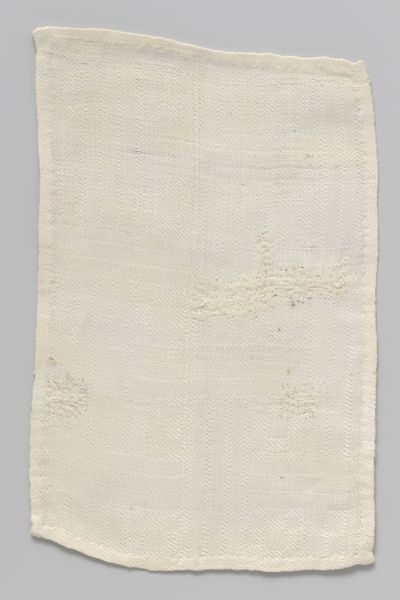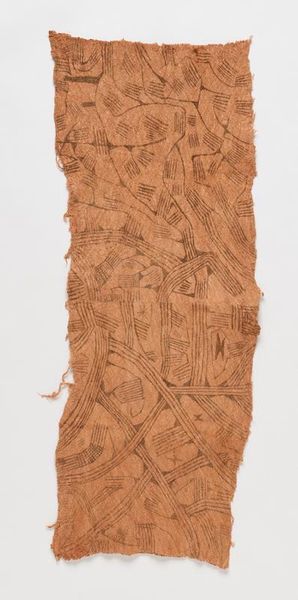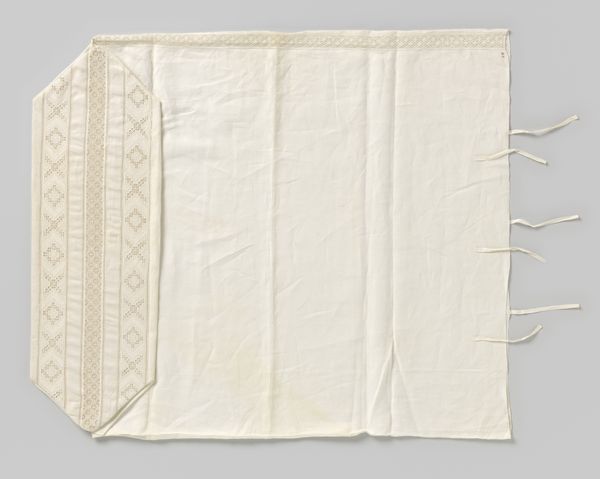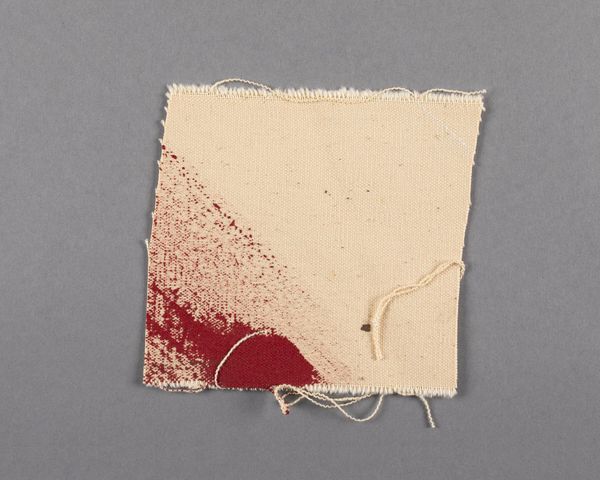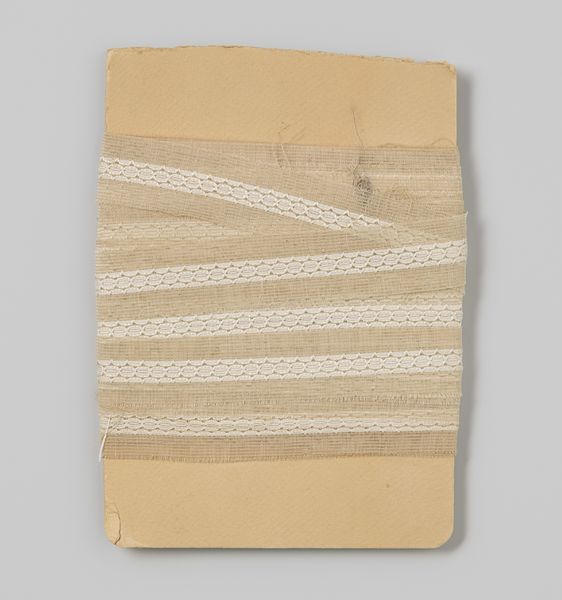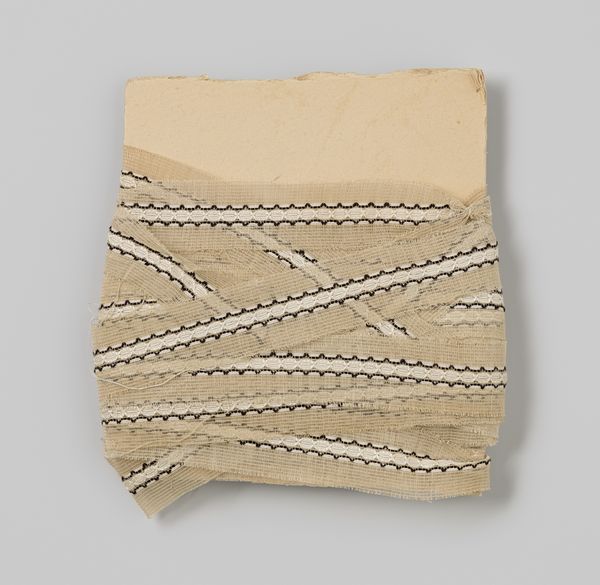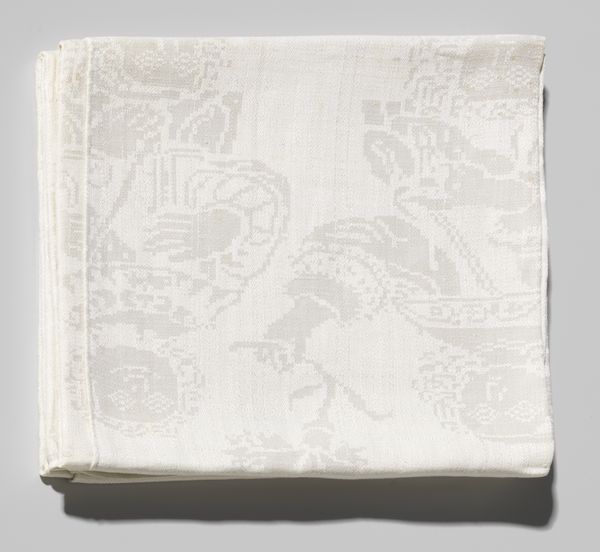
Strook rose stof met witte applicatiekant, zeer ruw bevestigd c. 1920
0:00
0:00
mixed-media, fibre-art, collage, textile
#
mixed-media
#
fibre-art
#
collage
#
textile
#
embroidery
Dimensions: length 25 cm, width 21 cm
Copyright: Rijks Museum: Open Domain
Curator: Immediately, I see delicacy struggling against imperfection. There's a raw quality, yet it whispers of refinement. Editor: Let's delve into this intriguing mixed-media artwork. What we're observing here is a piece dating back to around 1920, titled "Strook rose stof met witte applicatiekant, zeer ruw bevestigd"—roughly, "Strip of pink fabric with white appliqué lace, very roughly attached." It resides here at the Rijksmuseum. Curator: The rawness definitely grabs you, doesn't it? Those loosely attached floral lace appliques scattered across the thin rose-tinted fabric—they feel almost haphazard, defying expectations of perfect craftsmanship. Editor: Indeed. This piece raises questions about artistic intent and prevailing aesthetic values in the early 20th century. Consider the artist, Gustav Schnitzler. He works with this unexpected composition which borders on collage, made from textile and fiber. Do we see an embrace of the unfinished, a conscious move against bourgeois perfection? Curator: I think so! The flower symbols resonate with innocence and purity, heavily symbolic in earlier decades, but placed so rebelliously here, deconstructing those traditional connotations. The loose threads, visible seams—they almost mock the traditional, polished lacework they allude to. It has an irreverence. Editor: Precisely! Furthermore, we cannot overlook how display shapes perceptions. Museums are never neutral spaces; their act of enshrining such unconventional works confers importance. What once may have seemed a discarded fragment, an amateur attempt, gains legitimacy through institutional framing. Curator: It really makes you rethink your assumptions. We automatically interpret beauty, skill and symbolism of a given art object from an established order, right? This seems designed to confront our ingrained visual biases, challenging not only conventional imagery, but the nature of value itself. Editor: Absolutely. It's a potent reminder that artistic meaning is not inherent but evolves depending on socio-cultural and contextual understanding, and really even from piece to piece within an artistic body of work. I'm not so sure about a "discarded fragment" necessarily; clearly some decisions, or intentions, drove Schnitzler's choice. Curator: It does make you see familiar materials anew and it gives insight into how cultural objects evolve and have changed meanings through history and that's very compelling. Editor: I agree! Every stitch or absence of stitch prompts fresh consideration of why art speaks so strongly, even—or perhaps, especially—when whispering defiance.
Comments
No comments
Be the first to comment and join the conversation on the ultimate creative platform.
